This post tries to explain the difference between odds ratios and relative risk ratios;Das relative Risiko wird von anderen Risikoangaben unterschieden, zB vom absoluten Risiko, vom attributalen Risiko und von der Odds Ratio 3 Hintergrund Relative Risikoangaben können dazu benutzt werden, die Wahrnehmung eines Risikos zu verändern Dies wird häufig in Studien verwendet, um positive Ergebnisse gegenüber negativen herauszustellenCarsten Oliver Schmidt 1 & Thomas Kohlmann 1 International Journal of Public Health volume 53, pages 165–167 (08)Cite this article 15k Accesses 212 Citations 9 Altmetric Metrics details Download to read the full article text Author information Affiliations Institute for Community Medicine, Methods in Community

Hsrp 734 Advanced Statistical Methods June 5 08
Relative risk vs odds risk
Relative risk vs odds risk-And how just a few letters in the code fitting a generalized linear model mean the difference betweenAnd a risk of 095 is equivalent to odds
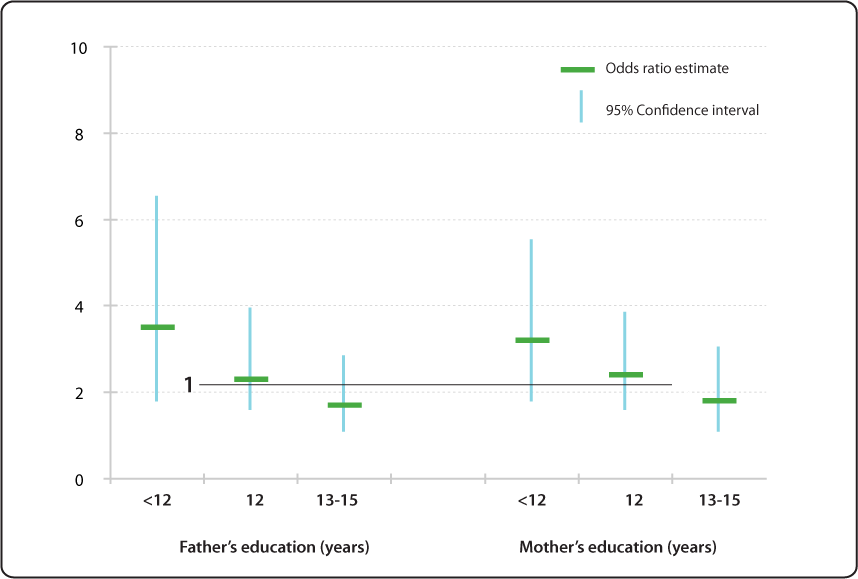



Relative Risk Odds Ratio Estimate With 95 Confidence Intervals Of Children Having Specific Language Impairment Sli By Parent S Level Of Education Reference College Graduate Or More Education 16 Years Nidcd
Since relative risk is a more intuitive measure of effectiveness, the distinction is important especially in cases of medium to high probabilities If action A carries a risk of 999% and action B a risk of 990% then the relative risk is just over 1, while the odds associated with action A are more than 10 times higher than the odds with BPortantly, we see that the odds ratio is close to the relative risk if probabilities of the outcome are small (Davies et al, 1998) And it is this fact that enables us, most of the time, to approximate the relative risk with the odds ratio Table 5 below illustrates the relationship between RR and OR for some probabilities of the outcomeThe relative risk (RR) and the odds ratio (OR) are the two most widely used measures of association in epidemiology The direct computation of relative risks is
Umrechnung Odds können in das Risiko P umgerechnet werden Odds = Wahrscheinlichkeit / Gegenwahrscheinlichkeit = P / (1 P) ⇔ 1 / Odds = (1 P) / P ⇔ 1 / Odds = 1 / P 1 ⇔ P = Odds / (Odds 1) In Dezimalschreibweise sehen Odds Risiken ähnlich, sind aber nicht gleichzusetzen Eine Odds von 0,25 (= 1 zu 4) entspricht bspw einem Risiko von 0,2!For practical purposes, assume that the odds ratio is the same as the relative risk Sometimes the outcome is a good one and the interpretation of relative risk is the opposite of what we have just outlined Relative risk reduction (RRR) tells you by how much the treatment reduced the risk of bad outcomes relative to the control group who did not have the treatment In the previous The homemade video abstract on the BMJ website shows you the difference between odds and risk, and how one odds ratio can mean several different relative risks (RRs), depending on the risk in one of the groups Unfortunately, in some situations, you just have to get an OR, notably logistic regression and retrospective casecontrol studies The bottom line is that
The literature dealing with the relation between relative risk and odds ratio is quite extensive (some examples are (Da vies et al, 1998;See all my videos at https//wwwzstatisticscom/videos/Health Stats IQ playlisthttps//youtubecom/playlist?list=PLTNMv857s9WUI5YsQMW14trmbopjZMWPa000 Int If we go a step further, we can calculate the ratio between the two risks, called relative risk or risk ratio (RR), which indicates how much more likely is the occurrence of the event in one group compared with the other group Meanwhile, the odds represents a quite different concept The odds indicates how much more likely is an event to occur




Relative Risk Odds Ratio Estimate With 95 Confidence Intervals Of Children Having Specific Language Impairment Sli By Parent S Level Of Education Reference College Graduate Or More Education 16 Years Nidcd




Measures Of Effect Relative Risks Odds Ratios Risk Difference And Number Needed To Treat Kidney International
The basic difference is that the odds ratio is a ratio of two odds (yep, it's that obvious) whereas the relative risk is a ratio of two probabilities (The relative risk is also called the risk ratio) Let's look at an exampleDes Odds Ratios als relatives Risiko zu einer Überschätzung des Therapieeffektes führen würde Das „Risiko" für einen Therapieerfolg ist in der DiclofenacGruppe im Vergleich zu Placebo ca 2mal so hoch (RR=2,08) und nicht 2,5mal so hoch (OR=2,47) Für beide Maßzahlen sind im Konfidenzintervall aus schließlich Werte enthalten, die für eine Überlegenheit von 50 mgNow that you have a general idea of what odds ratio and relative risk are you need to know when to use them They don't always just ask you to calculate one or the other Sometimes questions on Step 1 also require you to figure out which type of calculation is needed based on the situation In clinical trials and cohort studies we use relative risk to compare the incidence of health




Confidence Interval For Relative Risk Ppt Video Online Download



1
The relative risk (or risk ratio) is an intuitive way to compare the risks for the two groups Simply divide the cumulative incidence in exposed group by the cumulative incidence in the unexposed group where CI e is the cumulative incidence in the 'exposed' group and CI u is the cumulative incidence in the 'unexposed' group Explanation and demonstration with simulated data of the difference between relative risk ratios and odds ratios, and how to extract them from a generalized linear model This post tries to explain the difference between odds ratios and relative risk ratios;And how just a few letters in the code fitting a generalized linear model mean the difference between extracting one or the other There are plenty of other explan




What Is The Difference Between The Risk Ratio Rr And The Odds Ratio Or Quora




Against All Odds Improving The Understanding Of Risk Reporting British Journal Of General Practice
The odds ratio and the relative risk will not always disagree by this much Large effects on groups with high initial risk seem to cause the most problems See Davies et al (1998) for some useful guidelines for when the odds ratio and relative risk are likely to differ When they do differ, the relative risk represents the typical interpretation that most people make There are some The odds ratio will be greater than the relative risk if the relative risk is greater than one and less than the relative risk otherwise In the example above, if the adjusted odds ratio were interpreted as a relative risk, it would suggest that the risk of antibiotic associated diarrhoea is reduced by 75% for the intervention relative to the placebo group However, this wouldThe odds ratio (OR) is a ratio of 2 numbers, like the relative risk we have 3 options OR = 1 The odds in the first group are the same as those in the second So no evidence that drinking wine can either OR > 1 The odds of having the disease in the exposed group are




1 Relative Risks Odds Ratios Or Hazard Ratios Of Risk Factors For Download Table




Odds Ratio Vs Relative Risk Ratio And Why It Matters Youtube
Edna Schechtman, PhD Department of Industrial Engineering and Management, Ben Gurion University of the Negev, Beer Sheva, Israel ABSTRACT Introduction In recent years, the amount of available information in medical literature has increased rapidly, andFor instance, a relative risk of 70% corresponds to an odds ratio of 07/(107)=233 however, it is clearer to say to the layman that a certain risk factor "increases the probability of a disease by 70%" (relative risk) rather than that it "increases the probability of the disease by an oddsRelative risk and odds ratio The relative risk and the odds ratio are measures of association between exposure status and disease outcome in a population



1




Relative Risk Versus Odds Ratio Usmle Biostatistics 4 Youtube
Both the odds ratio and the relative risk compare the relative likelihood of an event occurring between two groups The relative risk is easier to interpret and is consistent with general intuition Some designs, however, allow only for the calculation of the odds ration Covariate adjustment is easier for an odds ratio Das Odds Ratio kann als eine Hilfskonstruktion für das Relative Risiko betrachtet werden Odds Ratio und Relatives Risiko sind numerisch etwas gleich groß, wenn die ErkrankungswahrscheinlichkeitenIt is assumed that, if the prevalence of the disease is low, then the odds ratio approaches the relative risk Case control studies are relatively inexpensive and less timeconsuming than cohort studies In this case the odds ratio (OR) is equal to 16 and the relative risk (RR) is equal to 865




Cph Exam Review Epidemiology Ppt Download




Literature Search
Examples of measures of association include risk ratio (relative risk), rate ratio, odds ratio, and proportionate mortality ratio Risk ratio Definition of risk ratio A risk ratio (RR), also called relative risk, compares the risk of a health event (disease, injury, risk factor, or death) among one group with the risk among another group It does so by dividing the risk (incidenceOdds ratio and relative risk About Press Copyright Contact us Creators Advertise Developers Terms Privacy Policy & Safety How works Test new features © 21 Google LLCRELATIVE RISK AND ODDS RATIO The relative risk (also known as risk ratio RR) is the ratio of risk of an event in one group (eg, exposed group) versus the risk of the event in the other group (eg, nonexposed group) The odds ratio (OR) is the ratio of odds of an event in one group versus the odds of the event in the other group An RR (or OR) of 10 indicates that there is no




Math Formula To Reproduce A Plot Comparing Relative Risk To Odds Ratios Cross Validated




Measures Of Effect Relative Risks Odds Ratios Risk Difference And Number Needed To Treat Kidney International
Relative Risk and Odds Ratio for the obese 3) Overall, you can see that decreasing the baseline incidence will decrease the odds ratio (300 in those who are nonobese versus 129 in those who are obese) Obviously, these results run counter to expected results, putting the onus on the researcher to justify them Similarly, you should find that increasing the incidence will increase the oddsThe risk ratio (or relative risk) is the ratio of the risk of an event in the two groups, whereas the odds ratio is the ratio of the odds of an event (see Box 92a) For both measures a value of 1 indicates that the estimated effects are the same for both interventions Neither the risk ratio nor the odds ratio can be calculated for a study if there are no events in the control group This isRelatives Risiko im Vergleich der Behandlung mit der Kontrolle (a × (b d)) / (b × (a c)) Sowohl für das Odds Ratio als auch für das relative Risiko stellt 1 keinen Unterschied zwischen den Gruppen dar Das Risiko (und die Chancen) müssen sich




Pdf The Relative Merits Of Risk Ratios And Odds Ratios Semantic Scholar




Relative And Attributable Risks Absolute Risk Involves People
The risk ratio (RR), also called the relative risk, is the ratio of the probability of cancer in smokers to the probability of cancer in nonsmokers RR = (a/(ab))/(c/(cd)) = (a(cd))/(c(ab)) Given that you know a, b, c, and d, you can compute either of these metrics Yet odds ratio is strongly preferred as the "right" metric to report in almost all scenarios That seems to be When to use the odds ratio or the relative risk?Odds ratios (OR) are commonly reported in the medical literature as the measure of association between exposure and outcome However, it is relative risk that people more intuitively understand as a measure of association Relative risk can be directly determined in a cohort study by calculating a risk ratio (RR)




Relation Between The Odds Ratio Relative Risk And Baseline Risk
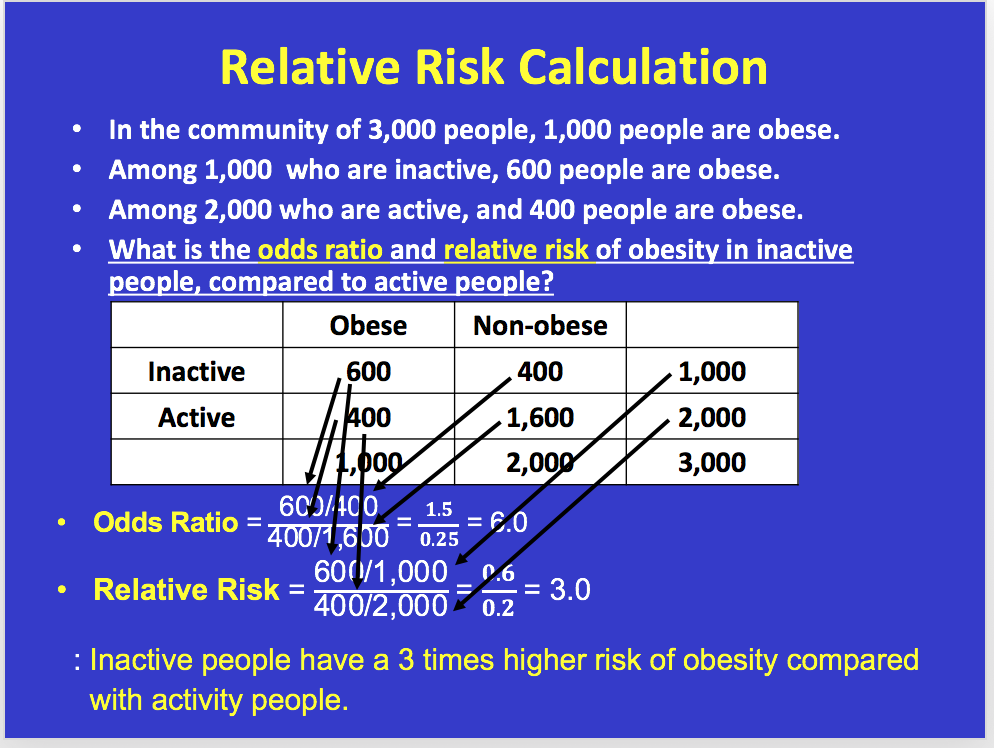



Youll Need To Know Prevalence Rate Odds Ratio Chegg Com
Odds Ratio, Relative Risk,Absolute Risk Reduction, and the Number Needed to Treat—Which of These Should We Use? RELATIVE RISK AND ODDS RATIO Risk and Odds just seemed the same to me for a long time Since then, I have come to understand to important difference Lets start with Relative Risk Relative Risk can be addressed by asking the following question How many times more likely is an "exposed" group to develop aOdds Ratio vs Relatives Risiko Das relative Risiko (RR) ist einfach die Wahrscheinlichkeit oder Beziehung zweier Ereignisse Nehmen wir an, A ist Ereignis 1 und B ist Ereignis 2 Man kann das RR erhalten, indem man B von A oder A / B dividiert




When Can Odds Ratios Mislead The Bmj




Calculation Of Odds Ratios Or And Relative Risk Rr Derived From Download Scientific Diagram
The Relative Risk Ratio and Odds Ratio are both used to measure the medical effect of a treatment or variable to which people are exposed The effect could be beneficial (from a therapy) or harmful (from a hazard) Risk is the number of those having the outcome of interest (death, infection, illness, etc) divided by the total number exposed to the treatment Odds is the number havingDas relative Risiko ist, wie das Odds Ratio (OR), ein Maß für den Zusammenhang zwischen Therapien und einem Zielergebnis Das relative Risiko RR der Therapie A zu Therapie B ist definiert als Quotient der Wahrscheinlichkeiten P für das Eintreffen desWhy are the relative risk and odds ratio approximately equal?




Pdf The Relative Merits Of Risk Ratios And Odds Ratios Semantic Scholar



Odds Vs Risk Vantage Research
The difference between odds and risk is small when the event is rare (as illustrated in the first example above where a risk of 0091 was seen to be similar to an odds of 01) When events are common, as is often the case in clinical trials, the differences between odds and risks are large For example, a risk of 05 is equivalent to an odds of 1; Odds ratio vs relative risk Odds ratios and relative risks are interpreted in much the same way and if and are much less than and then the odds ratio will be almost the same as the relative risk In some sense the relative risk is a more intuitive measure of effect size Note that the choice is only for prospective studies were the distinction becomes important in cases of medium Risk is often a more intuitive concept than odds, and thus understanding relative risks is often preferred to understanding relative odds However, OR does not suffer from the same causal assumption limitations as RR, making it more widely applicable




Definition And Calculation Of Odds Ratio Relative Risk Stomp On Step1




What Does An Odds Ratio Or Relative Risk Mean
Understanding Relative Risk, Odds Ratio, and Related Terms As Simple as It Can Get Chittaranjan Andrade, MD ABSTRACT Risk, and related measures of effect size (for categorical outcomes) such as relative risks and odds ratios, are frequently presented in research articles Not all readers know how these statistics are derived and interpreted, nor are all readers aware of their But a difference between two proportions near 0 or 1 may be more noteworthy than a difference between two proportions that fall closer to the middle of the 0,1 range To investigate this we turn to relative risk and odds ratios Relative Risk Relative risk is usually defined as the ratio of two "success" proportions In our case, thatUnfortunately, there is recognise problem that odds ratios do not approximate well to relative risk when initial risk is high 1 2 Thus, there is a danger that if odds ratios are interpreted as though they were relative risks, then they may be mislead Advice given in many texts is unusually coy on matter For example odds ratio is approximately same as relative risk if the outcome of




Cureus What S The Risk Differentiating Risk Ratios Odds Ratios And Hazard Ratios



Epidemiology Stepwards




Relative Risk And Odds Ratio Usmle The Journey




How To Be Awesome At Biostatistics And Literature Evaluation Part Ii Tl Dr Pharmacy




Relative Risk Vs Odds Ratio Extensive Video Youtube




Estimating Risk




Measures Of Effect Relative Risks Odds Ratios Risk
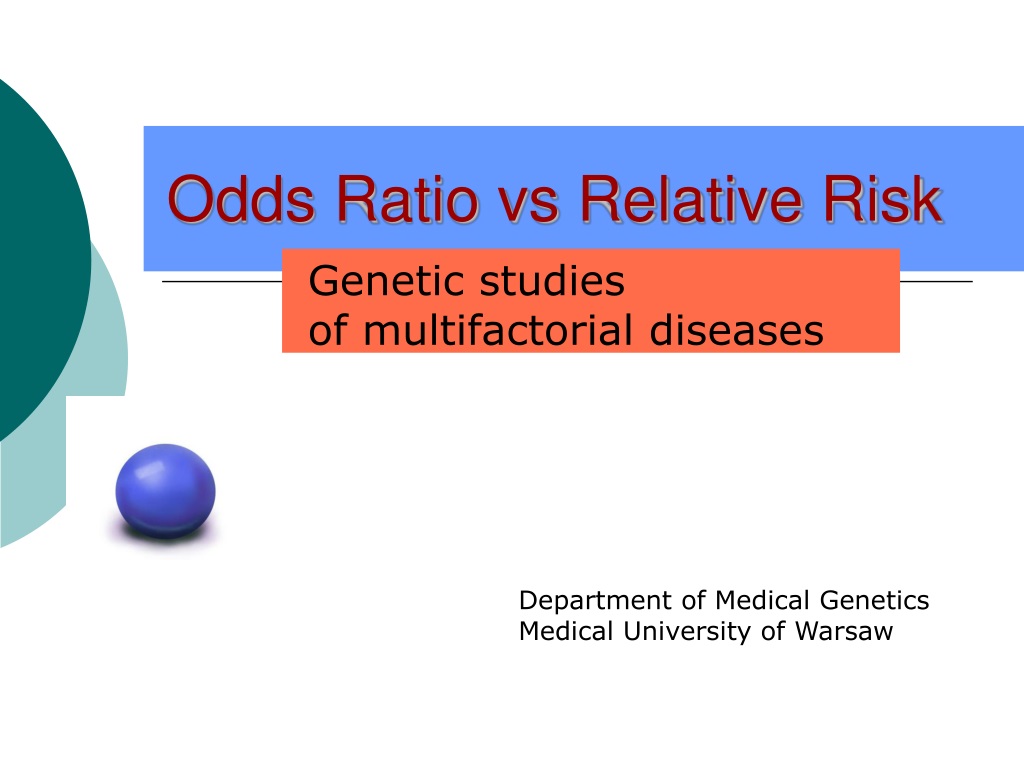



Ppt Odds Ratio Vs Relative Risk Powerpoint Presentation Free Download Id



6 7 8 9 10 11 12 13 14 15 16 17 18 19 21 22 23 24 25 26 27 28 29 30 Review Incidence And Prevalence Are Formally Defined On Slide 7 Birth And Death Rates Are Also Estimates Of Absolute Risk Risk Factors Are Identified By Determining




Effect Sizes Basicmedical Key



Relative Risk Ratios And Odds Ratios
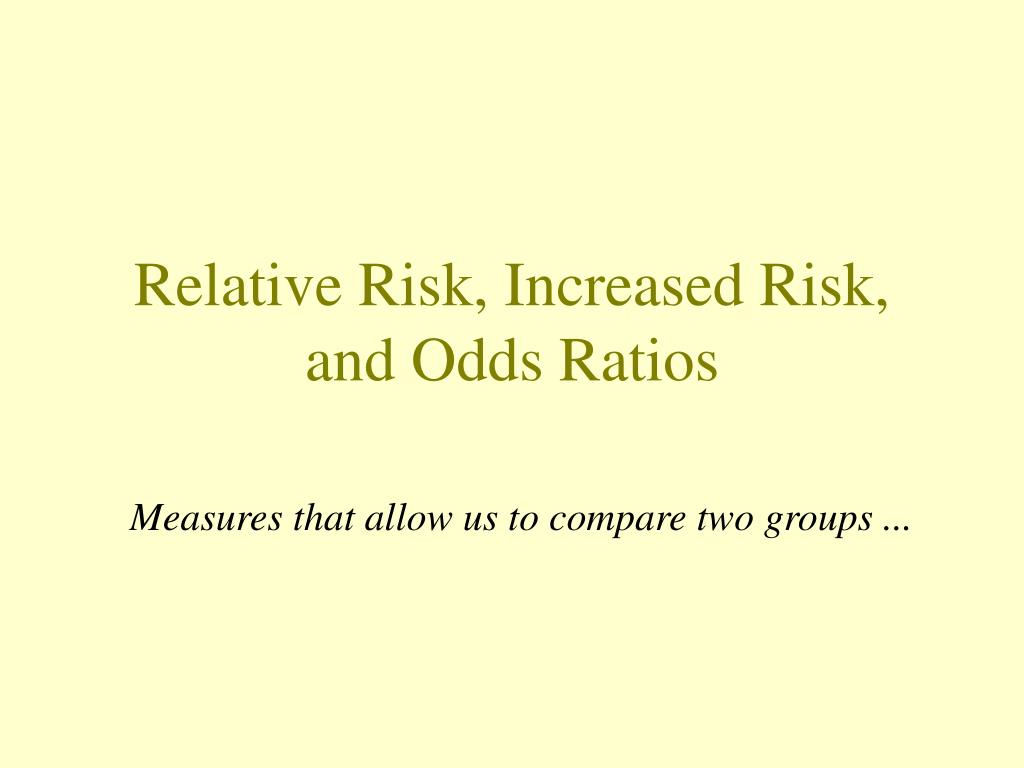



Ppt Relative Risk Increased Risk And Odds Ratios Powerpoint Presentation Id




Relative Risk Wikipedia



Research Statistics Basics Contents 1 Basic Concepts 2 References Basic Concepts Null Hypothesis The Hypothesis That The Independent Variable Has No Effect On The Dependent Variable For Example Steroids Do Not Improve Outcomes In Ards Would Be




Forest Plot Of Relative Risks Or Odds Ratios From Eighteen Download Scientific Diagram
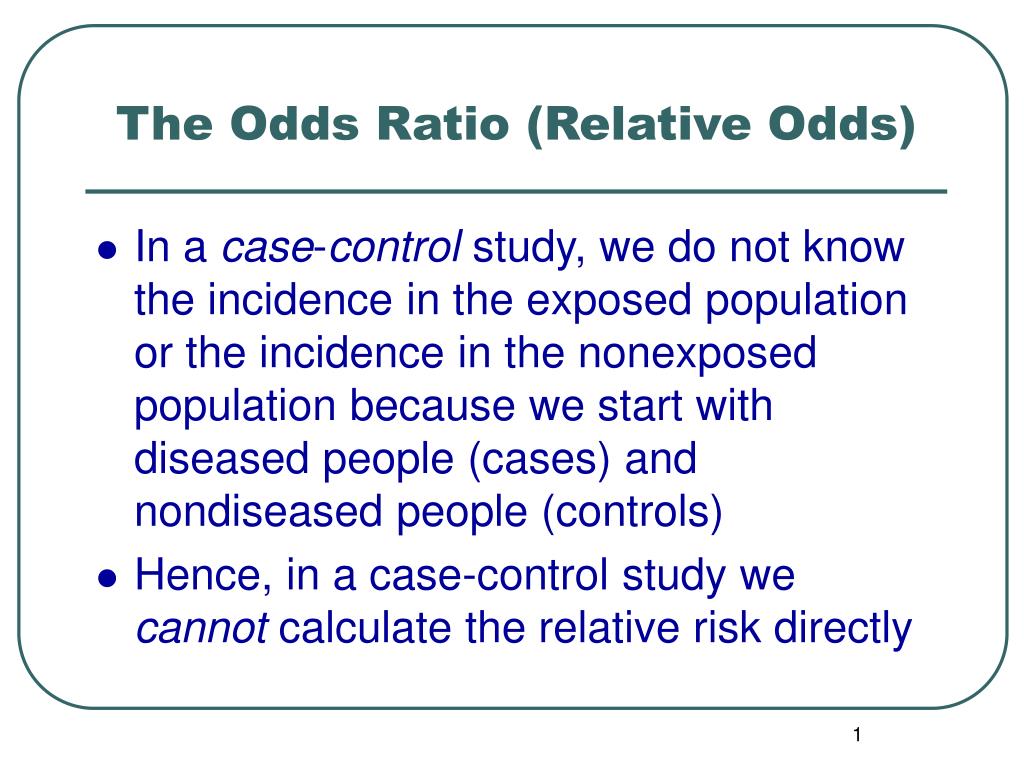



Ppt The Odds Ratio Relative Odds Powerpoint Presentation Free Download Id 6056




Relative Risks And Odds Ratios What S The Difference Mdedge Family Medicine




Odds Ratio Relative Risk Calculation Definition Probability Odds Youtube




How To Calculate Odds Ratio And Relative Risk In Excel Statology
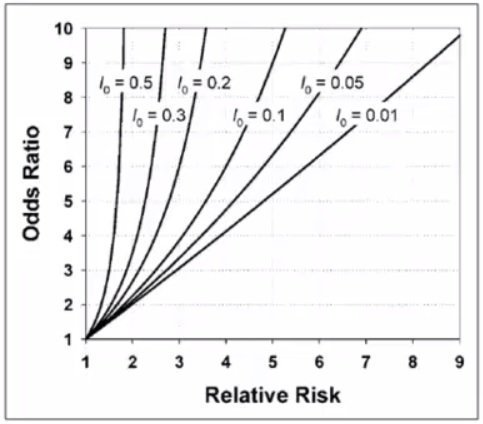



Cecile Janssens A Reminder That Odds Ratios Massively Overestimate Relative Risks When Outcome Is Common In The Population Or By Study Design E G Case Control Studies Io Is Proportion Of Cases



1




Relative Risk Odds Ratios Youtube




Pdf When To Use The Odds Ratio Or The Relative Risk Semantic Scholar




Relative Risk Vs Odds Ratio On The Backpack And Back Pain Study Massage Fitness Magazine



Q Tbn And9gcr Ttka12jaocnx Gn3ox9ci1ggq18vcw9359i6hq2cschyusam Usqp Cau




Hsrp 734 Advanced Statistical Methods June 5 08



Forest Plots Of Relative Risks And Odds Ratios Of Detecting Fecal Download Scientific Diagram




Converting An Odds Ratio To A Range Of Plausible Relative Risks For Better Communication Of Research Findings The Bmj




Odds Ratios Versus Relative Risk
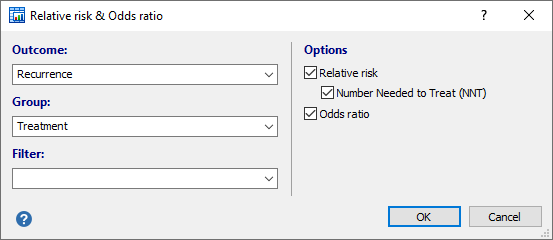



Relative Risk Odds Ratio




The Difference Between Relative Risk And Odds Ratios The Analysis Factor




Calculation And Interpretation Of Odds Ratio Or And Risk Ratio Rr Youtube




Odds Ratios Vs Risk Ratios Stats By Slough
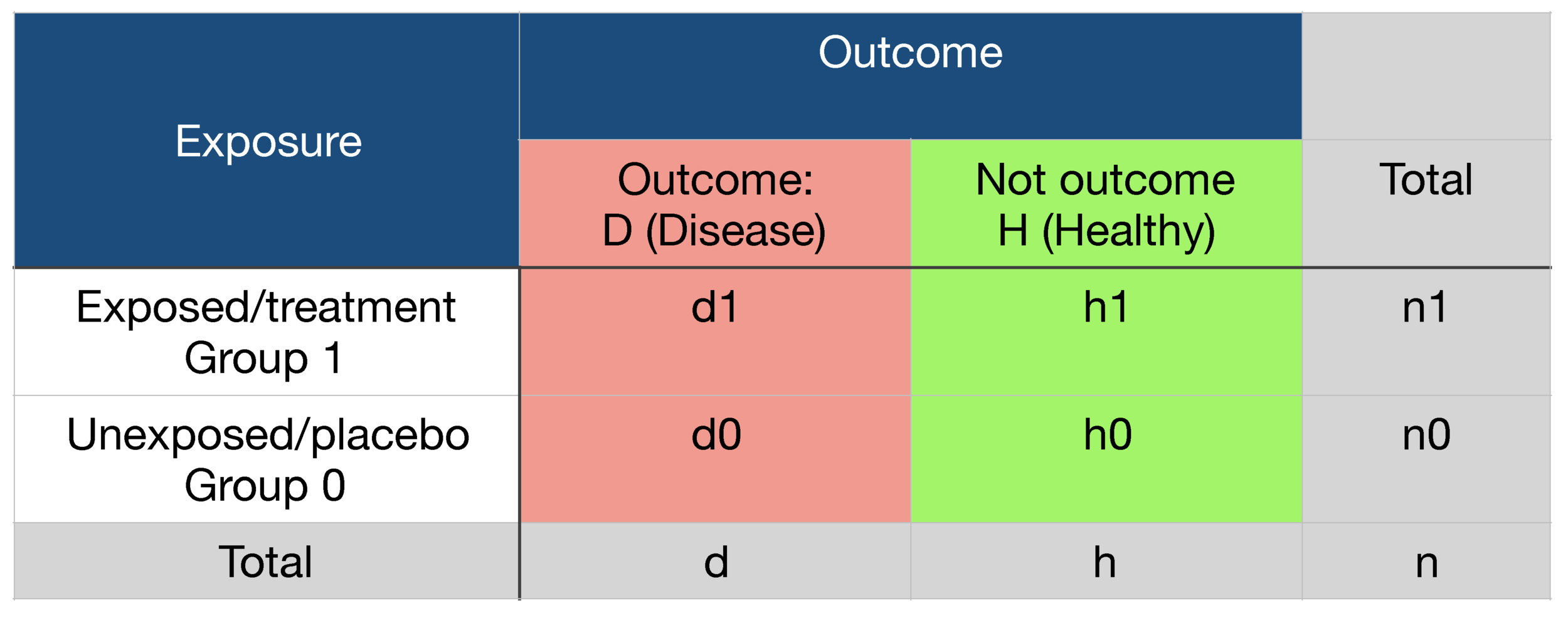



Probability Odds Ratio And Relative Risk Gpraj




On Biostatistics And Clinical Trials Odds Ratio And Relative Risk




Risk Estimates Relative Risk Ratio And Odds Ratio Analyses For Download Table




Relative Risk Wikipedia
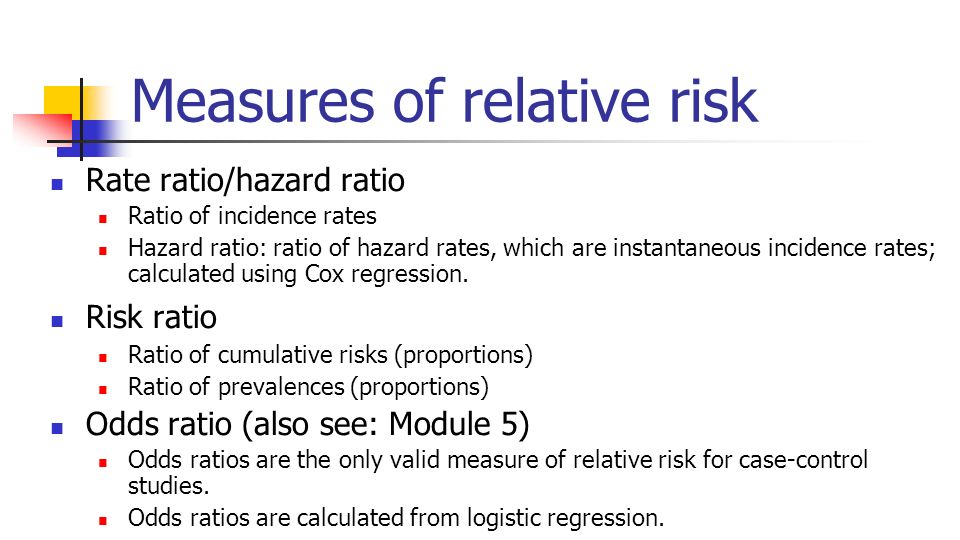



Statistics In Medicine Ppt Download




Wasp Write A Scientific Paper Using Excel 12 Odds Ratio And Relative Risk Sciencedirect




How To Calculate Odds Ratio And Relative Risk In Excel Statology




Hsrp 734 Advanced Statistical Methods June 5 08




Reporting The Results Sage Research Methods




Odds Ratio Relative Risk Risk Difference Statistics Tutorial 30 Marinstatslectures Youtube




Bar Graph Represents The Summary Odds Ratios Or Relative Risks Of The Download Scientific Diagram




Odds Ratio Wikipedia
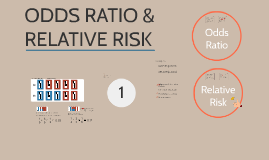



Odds Ratio Relative Risk By Susi Delaney



How To Interpret And Use A Relative Risk And An Odds Ratio Youtube




Chapter 6 Choosing Effect Measures And Computing Estimates Of Effect Cochrane Training




Relative And Attributable Risks Absolute Risk Involves People




What Does An Odds Ratio Or Relative Risk Mean



Absolute Risk Vs Relative Risk Vs Odds Ratio Pp Made Easy On Vimeo




Relative Risk Vs Odds Ratio Youtube




On Biostatistics And Clinical Trials Odds Ratio And Relative Risk



Beaumont Cloud Cme Com Launchscorm Aspx Caseid 112 Userid 0 Video True




Hazard Ratio Relative Risk Or Odds Ratio Of Selected Outcomes For The Download Table
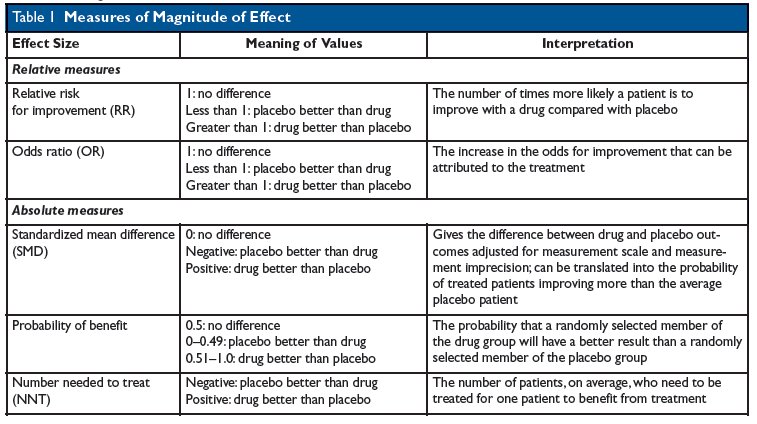



Kevin Whelan If You Re Struggling With Odds Ratios Relative Risks Standardised Mean Differences And Number Needed To Treat And The Associated Alphabet Soup Or Rr Smd Nnt Then This Paper




Pdf When To Use The Odds Ratio Or The Relative Risk



Population Perspective Made Easy On Vimeo




Cureus What S The Risk Differentiating Risk Ratios Odds Ratios And Hazard Ratios
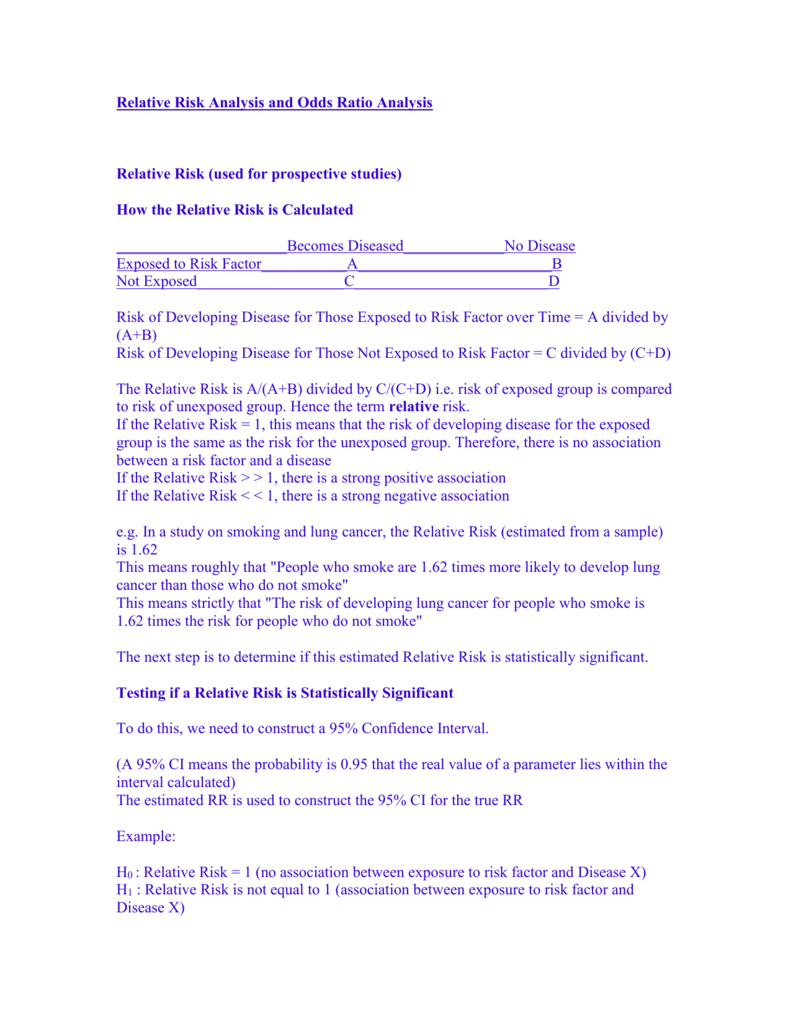



Relative Risk Analysis And Odds Ratio Analysis




Relative Risk And Odds Ratio



Relative Risk Ratio Vs Odd Ratio Ppt Authorstream




Calculation Of Relative Risks Rr And Odd Ratios Or Download Table




Odds Ratios Versus Relative Risk




Activity 4 Identification Of Risk Relative Risk Chegg Com




Odds Ratios And Risk Ratios Youtube




First Aid Epidemiology Biostatistics Flashcards Quizlet



Studying Studies Part I Relative Risk Vs Absolute Risk Peter Attia



Definition And Calculation Of Odds Ratio Relative Risk Stomp On Step1
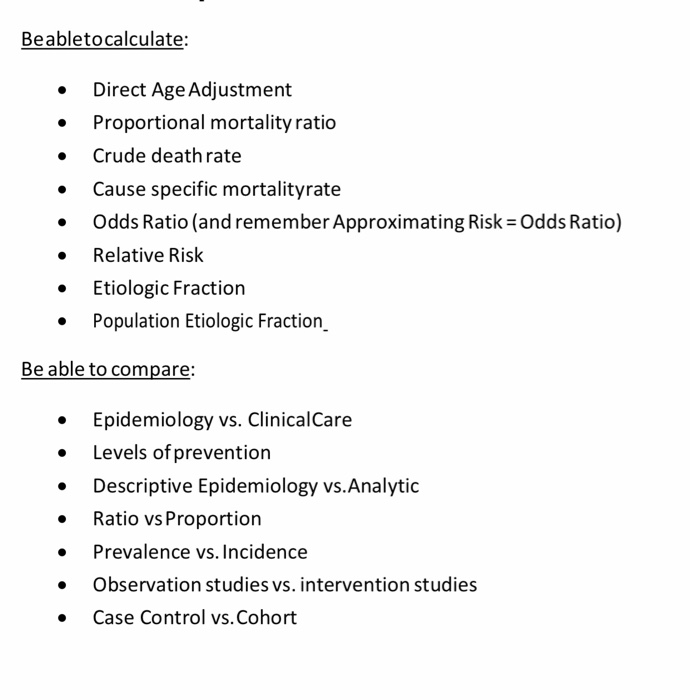



Beabletocalculate Direct Age Adjustment Chegg Com
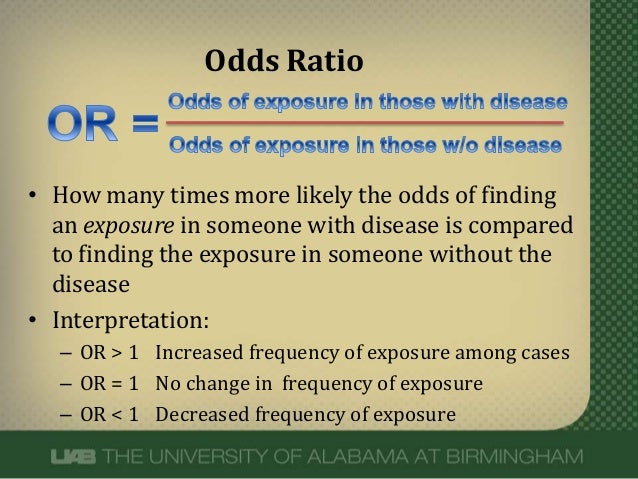



What Does An Odds Ratio Or Relative Risk Mean




Present Example Of An Dolds Ratio Compared To A Chegg Com



Github Flor3652 Odds Ratio Vs Relative Risk Shiny App
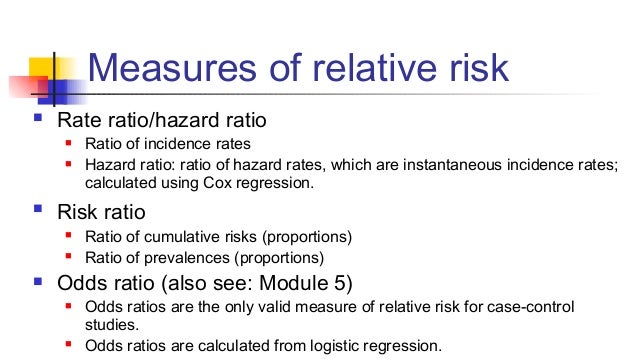



Math3010 Week 6




Select All Of The True Statements Regarding The Odds Chegg Com




Statistics Part 13 Measuring Association Between Categorical Data Relative Risk Odds Ratio Attributable Risk Logistic Regression Data Lab Bangladesh



Introduction To Genetic Epidemiology Lesson 5 Analyzing The Data




Risk Differences And Rate Differences
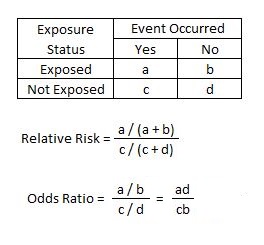



Relative Risk Article




Categorical Data Ziad Taib Biostatistics Astra Zeneca February



0 件のコメント:
コメントを投稿